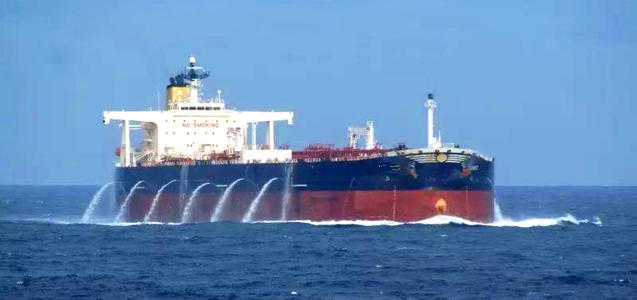Services
Related Pages
Ballast Water System D2 Commissioning Testing

The importance of Ballast Water Management Systems
The International Convention for the Control and Management of Ships’ Ballast Water and Sediments (also known as the Ballast Water Management Convention or BWM Convention), is a treaty effective as of 8 September 2017, and it requires signatory flag states to ensure ships flagged by them are complying with standards and procedures to manage and control exchange of vessels’ ballast water and sediments.
The BWM Convention is an internationally binding instrument developed by the International Maritime Organization (IMO) to address the transfer of harmful aquatic organisms and pathogens in ships’ ballast water, which occurs during its discharge.
Requirements of BWM Convention signatories
From 2017, it became mandatory for all vessels operating under the BWM Convention to have:
- a ballast water management plan
- a ballast water record book
- an International Ballast Water Management Certificate
In addition to the above requirements, it is also necessary for ships to adhere to two Discharge of Standards of Regulation, which are:
- the D1 standard, which requires ships to exchange ballast water in the open seas, away from coastal areas where few organisms are capable of surviving;
- the D2 standard, which specifies the maximum amount of viable organisms which are allowed to be discharged, including specified indicator microbes which can in many cases be harmful to human health.
The latter D2 standard usually requires the installation of a ballast water management system and it is compulsory for new ships to conform to this, whereas existing ships should exchange ballast water mid-ocean in order to meet the D1 standard. All ships must meet the D2 standard by 8 September 2024.
BWMS commissioning testing
IMO’s Marine Environmental Protection Committee (MEPC 74) in May 2019, approved draft amendments to the BWM Convention, which mandate commissioning testing of BWMS during installation surveys in order to verify that the BWMS is operating properly through representative sampling and indicative analysis. IMO outlined the purpose of ballast water commissioning testing in BWM.2/Circ.70/Rev.1, 2020 (dated 09/12/2020), entitled ‘Guidance for the commissioning testing of ballast water management systems’:
- “The purpose of commissioning testing is to validate the installation of a ballast water management system (BWMS) by demonstrating that its mechanical, physical, chemical and biological processes are working properly. Commissioning testing is not intended to validate the design of type-approved BWMS that are approved by the Administration.”
These amendments which were later adopted at MEPC 75 in November 2020, state that sampling and analysis should be conducted during commissioning testing for BWMS installed on board ships on or after 1 June 2022.
In addition to these amendments, two major revisions to this guidance were also adopted at MEPC 75, namely that:
- local ambient water should always be used for testing regardless of organism concentrations in the water; and,
- representative samples should be analysed for the two classes of organisms (namely ≥ 50 µm and ≥ 10 µm to 50 µm) as specified in the D-2 standard.
A handful Flag Administrations require early implementation of the revised guidelines to BWMS, with states such as Australia, Cyprus, Singapore, Tuvalu, Greece and India already making commissioning testing mandatory in accordance with their national maritime laws. In some cases, there may also be additional Flag Administration requirements for commissioning testing which vessels also have to comply with. Some flag administrations such as Bahamas, Panama and Liberia also recommend early implementation of the sampling analysis.
There are two sampling events which are required for the testing: one grab sample should be taken from the source ballast water, whilst the other should be taken from the discharge of ballast water after treatment. Both of these samples should thereafter be analysed in accordance with Discharge Standards of Regulation D-2.
What We Do
Complying with international regulations regarding the appropriate BWMS testing required onboard ships can often be highly complex, which is why we offer rapid, scientific and independent ballast water sampling and onboard testing for vessels travelling between international waters, either as part of an indicative analysis package, or alternatively a more detailed one.
Specifically, we use the 2nd generation ATP method developed by LuminUltra B-QUA and the FDA method developed by Satake Ballast Eye which are used to obtain immediate results onboard a vessel in less than 1 hour and are capable of detecting the two classes of organisms in ballast water. Indicative analyses can be carried out onboard ships through sampling tests. However, a more thorough and detailed analysis can be undertaken in our laboratories.
More information about the levels of analysis we provide can be seen in the tables below:
Indicative Analysis
|
IMO Parameter |
IMO Limit Value |
Method |
Testing Location |
|
Organisms ≥50 µm |
<10 viable organisms /m3 |
ATP/FDA |
On board |
|
Organisms ≥10 µm and <50 µm |
<10 viable organisms/mL |
ATP/FDA |
On board |
Detailed Analysis
|
IMO Parameter |
IMO Limit Value |
Method |
Testing Location |
|
Organisms ≥50 µm |
<10 viable organisms/m3 |
Microscopy |
Laboratory |
|
Organisms ≥10 µm and <50 µm |
<10 viable organisms/mL |
Microscopy |
Laboratory |
|
Indicator bacteria and pathogens: Escherichia coli (voluntary) |
<250 cfu/100 mL |
ISO 9308-1:2014 |
Laboratory |
|
Indicator bacteria and pathogens: Enterococci (voluntary) |
<100 cfu/100 mL |
ISO 7899-2:2000 |
Laboratory |
|
Indicator bacteria and pathogens: Toxigenic Vibrio cholerae (voluntary) |
<1 cfu/100 mL |
ISO 21872 |
Laborator |
Get in touch
If you have any questions or comments please don't hesitate to contact us
Services
Fuel Testing Solutions Water Compliance Services IHM & Recycling Asbestos Management Solutions NDT&UTMContact Us
192 Pandan Loop,
#05-27 Pantech Business Hub,
Singapore 128381
T +65 6271 8622